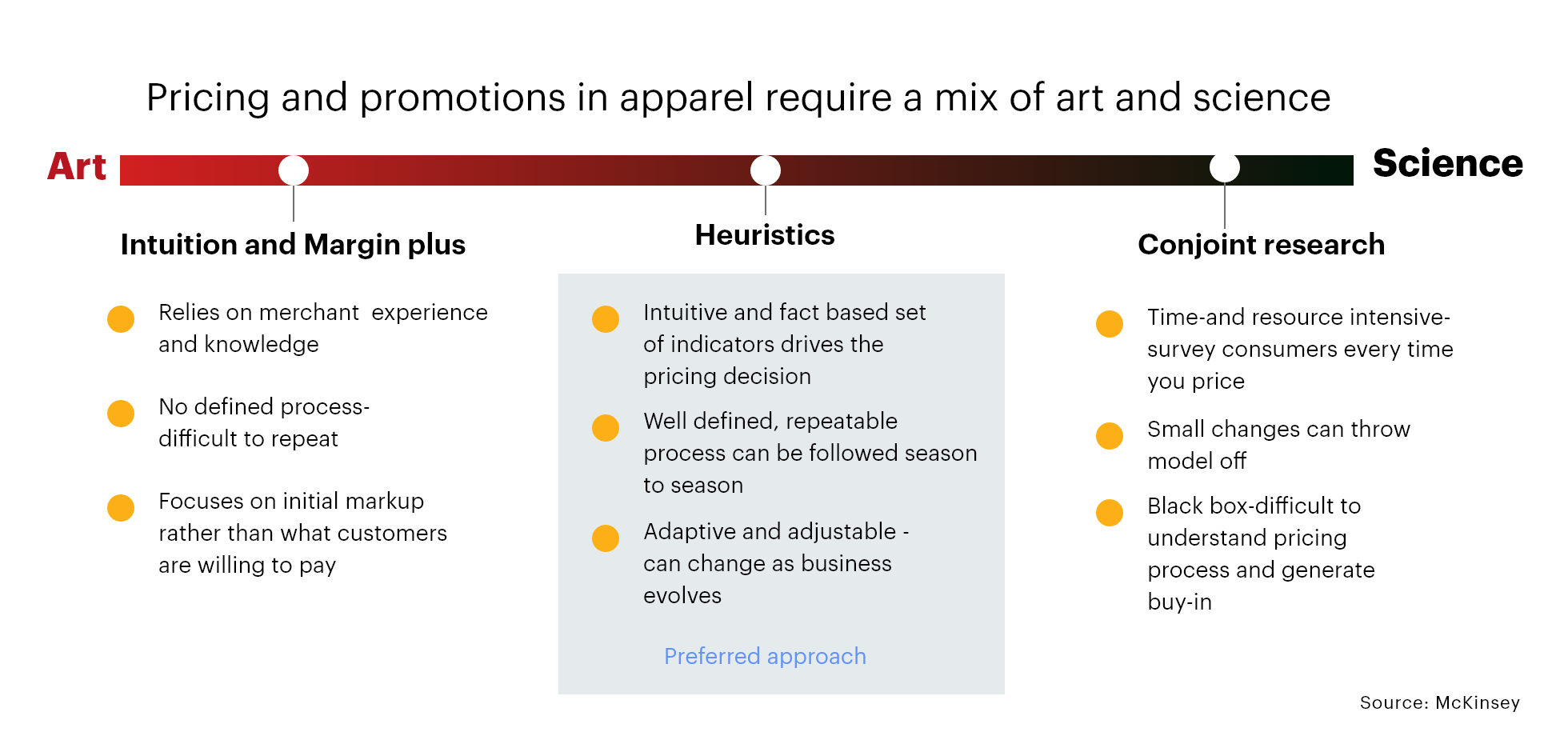While the fashion industry as a whole came out pretty unscathed through the pandemic with revenue growth of 24% in 2020-21, it might not be inflation-proof yet. While most brands are continuing to do pretty well, the inflation, just as the economy is opening up, is beginning to have an effect on customers’ sentiments.
Summary
• The fashion industry was relatively unscathed by the pandemic but inflation might be a bigger challenge.
• For fashion retail, pricing continues to play a crucial role in customers’ purchasing decisions.
• Going against most pricing conventions will continue to work for luxury fashion retailers.
• Budget and value-based fashion retailers must look for ways to not transfer increases in cost to the customers.
|
In fashion retail, even though customer preferences are ever-changing, pricing continues to play a crucial role in their purchasing decisions. So, you can still stay ahead by just adapting your pricing and promotion strategy keeping in mind your target audience’s sentiments and market trends.

Pricing in fashion retail falls largely under 3 categories:
Premium pricing
When it comes to luxury brands, the perceived value of the products is significantly higher than the value of the product itself. This is because the value these products and brands bring their customers is in the form of status, prestige, exclusivity, expensiveness, quality, and sustainability. These brands thrive on brand equity that they have built over decades if not centuries based on these values.
When the pandemic hit, brands like Ralph Lauren and Burberry decided to slash their prices to increase sales. What they did not realise was that the drop in sales for luxury brands, while whopping, was temporary and that it was bound to pick up and fastly too. These brands ended up losing brand equity while only gaining one-time customers who were unlikely to purchase again at full price.
So what works? Going against most rules of marketing! Price reductions and discounts are perceived more negatively by customers of luxury brands. But what you can do is provide added luxury value to your customers through your product. For example, a product line in collaboration with a celebrity.
Budget pricing
For 60% of customers, price is the primary factor behind their purchase decision and most fashion retail brands cater to most of these customers. These are people who look for the best price at which they can get a product. This does not mean they are looking for the cheapest but comparatively cheaper yet value for money.
For brands and stores looking to target this segment of the market, pricing and price promotions can be the primary marketing and sales tool and the key to customer acquisition, retention, and satisfaction. If you are a multi-brand fashion retailer, then this is great news for you, because these are the aspects of your business you’ll have quite the control over.
While you might be tempted to increase your product prices in response to the increase in cost, this might not be the best idea. Studies suggest that more customers are switching brands and retailers in search of better prices and a primary reason for this is that the customers are very savvy and aware of the prices.
However, you do not have to compromise on your margins. You just have to make sure your prices are not significantly higher than your competitors and if they are, you are aware of it, and make up for the difference in some serious value addition like customer support and personalisation when it comes to promotion, price, and experience.
Value pricing
There are customers who fall between the ones who prefer budget and luxury shopping when it comes to fashion retail. They are the ones who won’t mind paying a premium provided the products are worth it in terms of quality, durability, sustainability, etc. These customers perceive the worth of the product based on its value.
Sportswear or sporting goods is an example of a segment that tends to attract these customers. These products are purchased based on quality, durability, comfort, experience, etc. For instance, Nike and Adidas apparels tend to retail for similar prices and target a similar audience. Customers choose between these brands based on their experience with the products. Many products in this segment also tend to be seasonal. This means customers may not purchase them often but if they are impressed, they are likely to turn into repeat customers.
If you are a retailer who deals in this segment of fashion, striking a balance between the cost of the product, the value it provides, and the value perception of your customers is the key to pricing the products. Additionally, seasonal discounts and personalised promotions are a great way to acquire new customers but value addition in terms of quality and experience will help improve retention.
Final words
Pricing for fashion retail largely involves finding the balance between the art and science of pricing. While pricing decisions have to be data-based and have logic, it is important that your strategy can evolve and quickly adapt to changing market trends, customer sentiments, and fashion trends.
Pricechecker is a price intelligence software that monitors your competitors’ prices, promotions, and stock status and provides you with valuable insights both past and present. We leverage AI to fetch data promptly with 99% accuracy helping you make intelligent pricing decisions quickly in response to your competitors, fashion trends, and customer sentiments.






